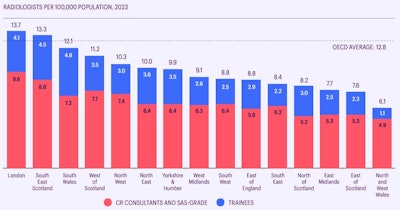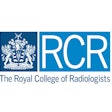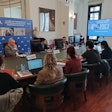Radiology leaders in the U.K. are reporting “dangerous shortages” of doctors needed to diagnose and treat patients who face growing delays accessing critical services.
The Royal College of Radiologists’ (RCR) annual clinical radiology workforce census for 2023, published on 13 June, reveals an escalating “workforce crisis” as demand is growing faster than staffing levels. It says “unacceptable delays” are putting patient safety at risk, while costs to the National Health Service (NHS) are soaring as spending on outsourcing and locums hit a record 276 million pounds - £52 million more than in 2022.
The U.K. is 1,962 radiologists “short of providing an adequate radiology service” and this could rise to 40% (3,670 radiologists) by 2028 “without meaningful action”, says the RCR which is calling for an urgent, comprehensive plan to support the radiology workforce.
In the foreword to the latest clinical radiology workforce census, Dr. Raman Uberoi, RCR medical director, said, “This report should act as a wakeup call – with a 30% shortfall of clinical radiologists, we are in a radiology emergency. We can no longer do more of the same. To date, there seems to have been a widespread lack of recognition from policymakers of the extent of this challenge, and the impact that the ever-widening gap between capacity and demand will have on the NHS and patients.”
The RCR census covers clinical radiologists who are experts in interpreting medical images, such as MRI and CT scans, and delivering minimally invasive procedures, as well as a report on clinical oncologists who plan and deliver chemo- and radiotherapy.
The key findings of the census were the following:
- Overall, the radiology workforce grew by 6.3% in 2023 but the rate of CT and MRI scans surged by 11% in the same timeframe
- Almost all (97%) clinical directors said that workforce shortages were causing backlogs and delays at their trust/health board while 91% of clinical directors said that workforce shortages were impacting patient safety.
- Nearly half of cancer centers reported weekly delays in patients accessing treatment in 2023
- Only half (48%) of U.K. trusts [hospital groups] and health boards are able to provide an adequate interventional radiology service
- In 2023, 745,000 patients in England waited over four weeks to receive the result of their imaging test following the scan
- There is a 15% shortfall of clinical oncology consultants (185 doctors), which is forecast to increase to 21% (325 doctors) by 2028
- Patients in 43% of cancer centers experienced weekly delays to radiotherapy, compared to 22% in 2022.
- Only 1% of radiology departments were able to meet their reporting requirements within the department’s contracted hours.
RCR President Dr. Katherine Halliday said the census findings were “stark.”
“We simply do not have enough doctors to manage the increasing number of patients safely and this problem will only worsen as demand continues to rise and more doctors leave the NHS,” she said in a statement. “The immense strain on an overburdened system, coupled with exhausted staff and increasing demand, creates a toxic cocktail for our NHS.”
Outsourcing
The NHS shouldered a record-breaking cost of £276 million in 2023 for outsourcing, insourcing, and ad-hoc locum staffing- which could fund 2,690 consultant salaries a year, more than covering the original shortfall in professionals – and the figure could hit £459 million by 2028.
Over five in six departments outsourced imaging scans to private teleradiology companies. Many radiologists work for outsourcing companies in addition to their NHS work but this “often means radiologists are overworked which can contribute to earlier retirement,” the RCR said.
 Image courtesy of the Royal College of Radiologists.
Image courtesy of the Royal College of Radiologists.
Regional Variation
The severity of workforce shortages is not uniform across the country.
The RCR says, “We are starting to see the impact of significant regional variation in the number of doctors, potentially introducing and worsening existing health inequalities.”
 Image courtesy of the Royal College of Radiologists.
Image courtesy of the Royal College of Radiologists.
Impact on workforce
The workforce crisis is set to get even worse as doctors are leaving the workforce at a younger age than ever before: Two-thirds of clinical oncology consultants who left the workforce in 2023 were under 60 years old.
Workforce shortages are “clearly having an impact on staff themselves” - 100% of clinical directors are concerned about the impact of workforce shortages on workforce morale and burnout.
Training Challenges
Growing the workforce relies on services being able to train future doctors. But programs are increasingly struggling to accommodate new trainees. Due to extreme workload pressures, consultants find it difficult to prioritize training.
Some 82% of clinical directors in England said that accessing trust/health board funding for a training post was a barrier. For 40% it was a significant barrier.
Recommendations
Across clinical oncology and clinical radiology, the RCR is calling for the U.K. government and NHS to implement a three-point workforce plan to recruit, train and retain staff. It says workforce and training places for clinical oncologists and clinical radiologists should be expanded.
Hospitals, particularly those with the highest shortages of clinical radiologists and clinical oncologists, should ensure they have a long-term funding plan for training and consultant posts.
To support retention, trusts and health boards should ensure basic staff wellbeing measures are in place, and regulators should assess employing trusts on staff wellbeing and how well hospitals are treating their employees. Flexible working patterns should be offered as a default to all existing and new NHS staff.
The census portrays the clinical radiology and clinical oncology workforce as it stood on 1 September and 1 October 2023.



















